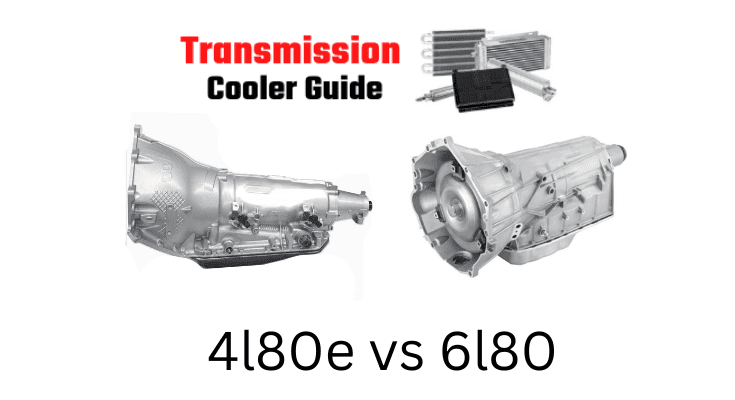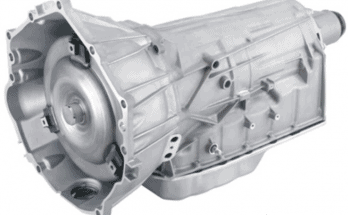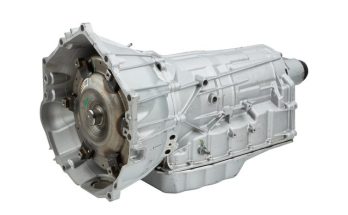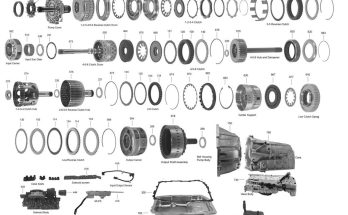The 4L80e and 6L80 are both automatic transmissions made by General Motors. The main difference between the two transmissions are their size and torque capacity.
The 4L80e is a heavy-duty transmission that was originally designed for use in large trucks and SUVs, while the 6L80 is a more recent design that is smaller and lighter, but still capable of handling high levels of torque.
Both the 4L80e and 6L80 are commonly found in large, heavy-duty vehicles such as trucks, SUVs, and vans. While the two transmissions share many similar features and capabilities, there are some key differences between them that can impact their performance, durability, and suitability for different types of vehicles and driving conditions.
Key Differences Between 4l80e and 6l80 Transmissions
- Size & Weight
- Fluid Capacity
- Type of transmission fluid
- Type of vehicles they’re used in
- Durability
- Fuel Economy
- Shift performance
- Towing capabilities
Size & Weight
One of the key differences between the 4L80e and 6L80 transmissions is their size and weight. The 4L80 is a larger and heavier transmission, with a total weight of around 180 pounds and dimensions of 19.63 inches in length, 17.25 inches in width, and 11.13 inches in height.
In comparison, the 6L80 transmission is smaller and lighter, with a weight of around 160 pounds and dimensions of 17.9 inches in length, 13.8 inches in width, and 10.5 inches in height.
4l80e & 6l80: Transmission Fluid Capacity
Another significant difference between the 4L80e and 6L80 transmissions is their fluid capacity. The 4L80e transmission requires around 18.5 quarts of transmission fluid, while the 6L80 transmission only requires around 13.5 quarts.
This difference in fluid capacity can impact the overall performance and efficiency of the transmission, as well as the frequency of maintenance and fluid changes.
4l80e vs 6l80: Type of Transmission Fluid
When it comes to transmission fluid, both the 4L80e and 6L80 transmissions use Dexron transmission fluid that is designed to provide optimal performance and protection for the transmission.
The 4L80 transmission typically requires a GM Dexron III (dex/merc) or equivalent transmission fluid, while the 6L80 transmission typically requires a GM Dexron VI or equivalent transmission fluid.
Despite both transmissions using different types of Dexron ATF, both can use Dexron VI since it is backwards compatible. However, you cannot use Dex III in any Dex VI required applications.
What Vehicles Are They Best Used In
One of the key differences between the 4L80e and 6L80 transmissions is the type of vehicle they are intended for. The 4L80e transmission is commonly found in larger, heavy-duty vehicles such as trucks, vans, and SUVs, where its size and weight are better suited to the vehicle’s capabilities.
In contrast, the 6L80 transmission is commonly found in smaller, lighter vehicles such as sedans and sports cars, where its smaller size and weight can provide better performance and fuel efficiency.
Which Transmission is More Durable?
In terms of performance and durability, both the 4L80e and 6L80 transmissions are known for their reliability and long-lasting performance. However, the 4L80 transmission is generally considered to be the more durable and capable of the two, with a robust and rugged design that is well-suited to heavy-duty vehicles and demanding driving conditions.
Since the 6L80 transmission is more common in lighter vehicles and less demanding driving conditions, it typically doesn’t last as long or handle abuse as well as the 4l80e would in heavier trucks that tow or haul any significant weight.
Fuel Economy
Another difference between the 4L80e and 6L80 transmissions is their gear ratios. The 4L80 has a first gear ratio of 3.06, a second gear ratio of 1.63, a third gear ratio of 1.00, and a fourth gear ratio of 0.75.
The 6L80, on the other hand, has a first gear ratio of 4.03, a second gear ratio of 2.36, a third gear ratio of 1.53, a fourth gear ratio of 1.15, a fifth gear ratio of 0.85, and a sixth gear ratio of 0.67.
This means that the 6L80 transmission has a wider range of gear ratios, which allows for better acceleration and fuel economy.
In terms of fuel economy, the 6L80 transmission is generally considered to be more efficient than the 4L80e. This is due to its wider range of gear ratios and its use of electronic components, which allow for more precise control over the transmission’s operation.
Additionally, the 6L80’s sixth gear ratio is lower than the 4L80’s fourth gear ratio, which means that it can operate at lower engine speeds and reduce fuel consumption.
Shift Performance
The 4L80 is a hydraulic transmission, which means that it uses hydraulic fluid to transmit power from the engine to the wheels. The 6L80, on the other hand, is a hybrid transmission that uses both hydraulic and electronic components. This allows for more precise control over the transmission’s shifting and overall performance.
Yes, the 4l80e is electronically controlled, but nearly as much as the 6l80e. Since the 6l80 has more electronics, this allows for a lot more customization and parameters to tune with software that can change a lot in terms of shift performance.
Overall, the main differences between the 4L80 and 6L80 transmissions are their gear ratios, construction, and fuel economy. The 6L80 transmission offers better acceleration and fuel economy thanks to its wider range of gear ratios and its use of electronic components. However, the 4L80 transmission is still a reliable and durable option for heavy-duty trucks and full-size SUVs.
Towing Performance
The 4L80 and 6L80 are both heavy-duty, automatic transmissions designed for towing applications. However, there are a few key differences between the two that may affect their performance and suitability for different vehicles and towing needs.
First, the 4L80e has four forward gears and a single reverse gear, while the 6L80 has six forward gears and a single reverse gear. This means that the 6L80 has two additional gears that can be used to provide more precise control over the engine’s speed and torque output, potentially allowing for smoother, more efficient acceleration and deceleration when towing heavy loads.
Second, the 4L80 is physically larger and heavier than the 6L80, which may make it more difficult to install in some vehicles. This could be a significant consideration if the vehicle has limited space for a transmission or if the additional weight could affect its overall weight distribution or handling.
Third, the 6L80 is equipped with a more advanced, electronically-controlled hydraulic system that allows for faster, more precise shifting and improved fuel efficiency. This means that the 6L80 can potentially provide better performance when towing heavy loads, especially when operating at higher speeds or in challenging driving conditions.
Conclusion
Ultimately, the answer to the question “which transmission is better, the 4L80e or 6L80” is it depend on the specific needs and requirements of the vehicle and the driver.
For larger, heavy-duty vehicles that require a robust and durable transmission, the 4L80 may be the better choice. For smaller, lighter vehicles that require a more compact and efficient transmission, the 6L80 may be the better option.
Either way, General Motors did a great job with both transmissions. They can each handle a decent amount of power in factory form, and with aftermarket modifications and tuning, they can both be great and nearly bulletproof in many applications.




